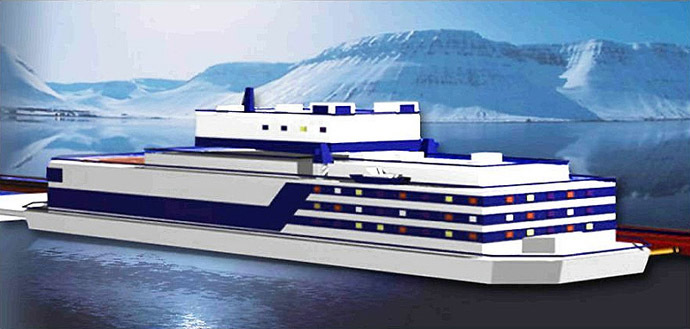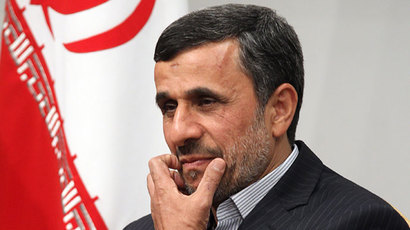World’s first floating nuclear power plant to begin operating in Russia in 2016

In three years, Russia will have the world’s first floating nuclear power plant, capable of providing energy and heat to hard-to-get areas as well as drinking water to arid regions.
The unique vessel should be operational by 2016, the general
director of Russia’s biggest shipbuilders, the Baltic Plant,
Aleksandr Voznesensky told reporters at the 6th International
Naval Show in St. Petersburg.
The Akademik Lomonosov is to become the spearhead of a series of
floating nuclear power plants, which Russia plans to put into
mass-production.
The floating power-generating unit, aimed at providing energy to
large industrial enterprises, port cities and offshore gas and
oil-extracting platforms, was designed on the basis of nuclear
reactors which are equipped on the icebreakers ships. The
technology has proved itself for over 50 years of successful
operation in extreme Arctic conditions.
The floating power plant is a vessel with a displacement of
21,500 tons and a crew of 69 people. It’s non-self-propelled and
therefore has to be towed to the desired destination.

Each ship will have two modified KLT-40 naval propulsion reactors
together providing up to 70 MW of electricity or 300 MW of heat,
which is enough for a city with a population of 200,000 people.
The floating nuclear power plants are expected to be used in
remote regions of Russia’s high north and Far East, which
currently see economic growth suffering from a lack of energy.
For export purposes, the floating power plant can also be
modified as a desalination plant able to produce 240,000 cubic
meters of fresh water on a daily basis.
15 countries, including China, Indonesia, Malaysia, Algeria, Namibia, Cape Verde and Argentina, have previously expressed interest in acquiring such power stations.
The manufacturer stresses that the process of fuel enrichment on
the vessels complies with the regulations of the International
Atomic Energy Agency (IAEA) dealing with nonproliferation of
nuclear arms.
Like every atomic station the floating power plant is designed
with a safety margin, exceeding any possible threats, which makes
the reactors invulnerable to tsunami waves or crashes with other
ships or on-land structures.
The power-generating unit is to be replaced by a new one after 40
years, with the used reactor returned to a specialized facility
for re-utilization.
The vessels are said to be safe for the environment as they don’t
release any hazardous substances during operation.
The construction of the maiden floating nuclear power station,
Akademik Lomonosov, began in 2007 at the Sevmash
Submarine-Building Plant in Severodvinsk.
A year later it was transferred to the Baltic Plant, but was
stalled for the last two years due to a lack of financing.
The new deal to finalize the construction of a floating power
unit for the floating nuclear power plant was signed between the
Baltic plant and the Russiam state Rosenergoatom company in
December 2012.














